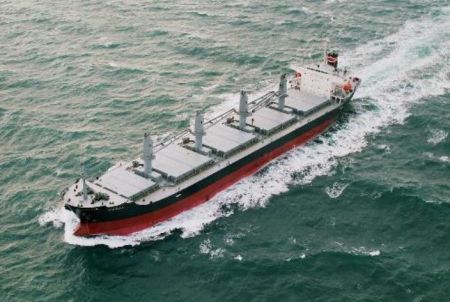
Handysize and handymax charter rates will remain stable at their current level until the end of the year, supported by a strong global grains trade, and according to a fresh piece of analysis are the only dry bulk carriers still making money.
In addition to Russian grain trades supporting handysize and handymax rates, US exports on these vessels have begun picking up recently.
In Russia, total grain exports amounted to 5.7m tonnes in July and August alone, compared with 3.6m last year. Exports from the country could total more than 20m tonnes in 2011, according to the latest analysis on the dry bulk sector by marine consultancy Maritime Strategies International, based partly on data provided by the International Grains Council.
In the US, soya bean, wheat and coarse grain cargoes have been helping to provide employment for handysize vessels out of the US Gulf. According to MSI, Chinese soya bean imports will also begin to rebound this month, providing extra stimulus to the market.
As a result, handysizes are the only dry bulk vessel types which, according to MSI, are still making money. Figures published by the marine consultant show that average one-year time charter rates for a modern 52,000 dwt vessel, hovering around $13,400 per day in August, ensured earnings 9% above the amount required to break even for a newbuilding. Modern capesize and supramax vessels made only 78% and 94% of this amount respectively in the same month.
The smallest dry bulk ships are also doing relatively well because global tonnage is growing only slowly. The handysize fleet is projected to grow by a mere 0.2% in the first quarter of next year, according to MSI. This also stands in marked contrast to capesize and panamax markets, where fleets are expected to grow by 2.5% and 1.9% respectively in the same period.
This pattern is reflected in a relatively strong sale and purchase market for handysize vessels. While average prices paid for secondhand capesizes fell to the lowest level seen since the recession began in August, handymaxes have rebounded somewhat since, with the average price of a 10-year-old 28,000 dwt-30,000 dwt handysize vessel as reported by Clarksons reaching $18.5m last month, up $3.5m from the trough of 2009.
MSI forecasts indicate that handysize trades will begin to deteriorate in the second quarter of the new year, however. MSI writes that the market will then experience a “long, protracted” period of low rates
(IMDO)
We use cookies to improve your experience. By continuing to use our site, you accept our Cookies, Privacy Policy,Terms and Conditions. Close X